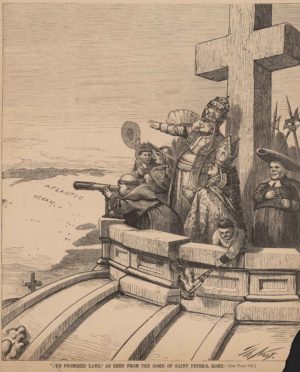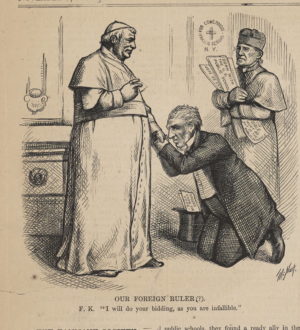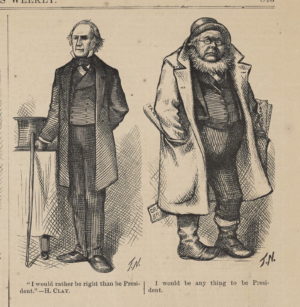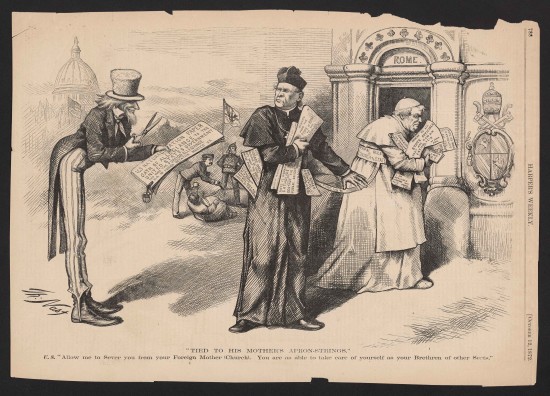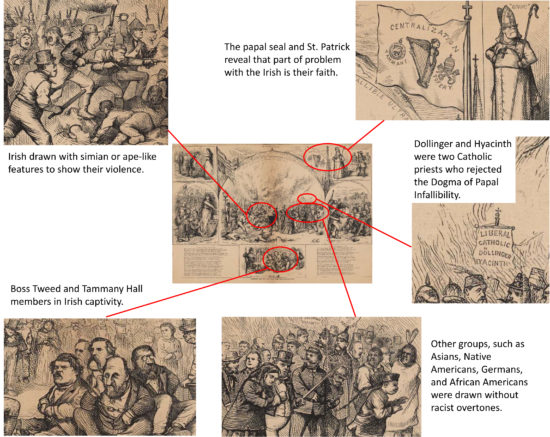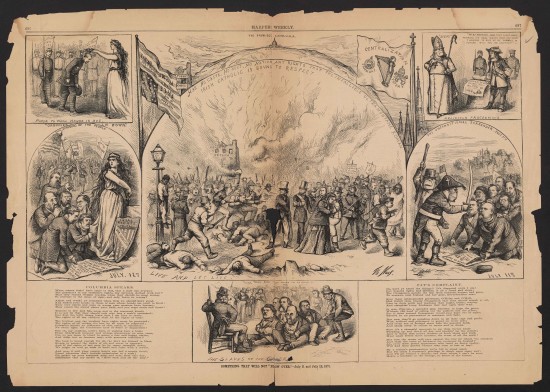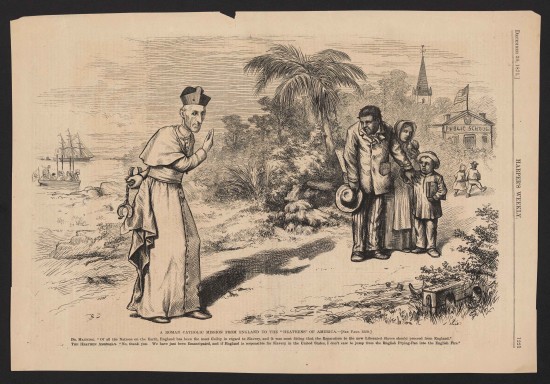Pope
One of the themes seen throughout Nast’s cartoons was that the pope wanted to use Catholics to rule the United States. Nast saw this as a real threat to America’s spiritual and physical freedoms.
“”The Promised Land,” as seen from the Dome of St. Peter’s, Rome,” October 1, 1870
The pope and other clergy stand atop St. Peters Basilica and greedily eye America as the Promised Land. The inclusion of the weapons in the background makes clear that Nast is suggesting that unless America is vigilant, it risks conquest by the papacy.
“Our Foreign Ruler(?),” November 2, 1872
A small cartoon in which Nast accuses Francis Kernan, the Democratic candidate for Governor of New York, of swearing allegiance to the pope. Having Kernan declare, “I will do your bidding, as you are unfallible,” Nast shows his fear that Irish politicians would turn the United States into a theocracy (a country ruled by religious leaders).
“I Would Be Anything to be President,” November 2, 1872
Nast contrasts Henry Clay with presidential candidate and founder of the New-York Tribune Horace Greeley. Greeley was the nominee for both Liberal Republican and the Democratic Parties for the 1872 election. As a major supporter of President Grant, Thomas Nast connected Greeley to Tammany Hall to depict him as unfit for office.
“The German Vote,” November 2, 1872
In 1872, Senator Carl Schurz created the Liberal Republican Party to oppose the reelection of President Ulysses S. Grant. In this cartoon, Nast shows that Schurz is unable to organize the German vote. The poster with the line “they have no dictator,” highlights Nast’s view that the Irish Catholic vote was being commanded by the Vatican and Tammany Hall.
“The Same Old Smell,” November 2, 1872
Tammany Hall was a Democratic Party political machine used to organize votes within New York City. The organization’s work with immigrants led to deep connections with the Irish community. Tammany then used the Irish vote to keep its members in power. Due to its ties to the Irish Catholics and corruption under leader William Tweed, Nast believed Tammany was rotten to the core.
“Tied to His Mother’s Apron-Strings,” October 12, 1872
Here Uncle Sam offers to free an American bishop from the pope’s plans to rule both church and state. Nast seems to suggest that the problem with Catholics is not their faith but their allegiance to a foreign power. In the background, the Germans can be seen cutting their bishop loose.
“Something that will not ‘blow over’,” July 29, 1871
On July 12, 1871 in New York City, Irish Catholics clashed with the National Guard protecting an Irish Protestant parade. In response, Nast drew a number of anti-Irish cartoons for Harper’s Weekly. This cartoon illustrated the Draft Riots of July 1863, where Irish Catholics attacked African-Americans throughout New York City. Nast blamed the attacks on both the ethnicity of the Irish and their Catholic religion, believing that it made them incompatible with American values.


